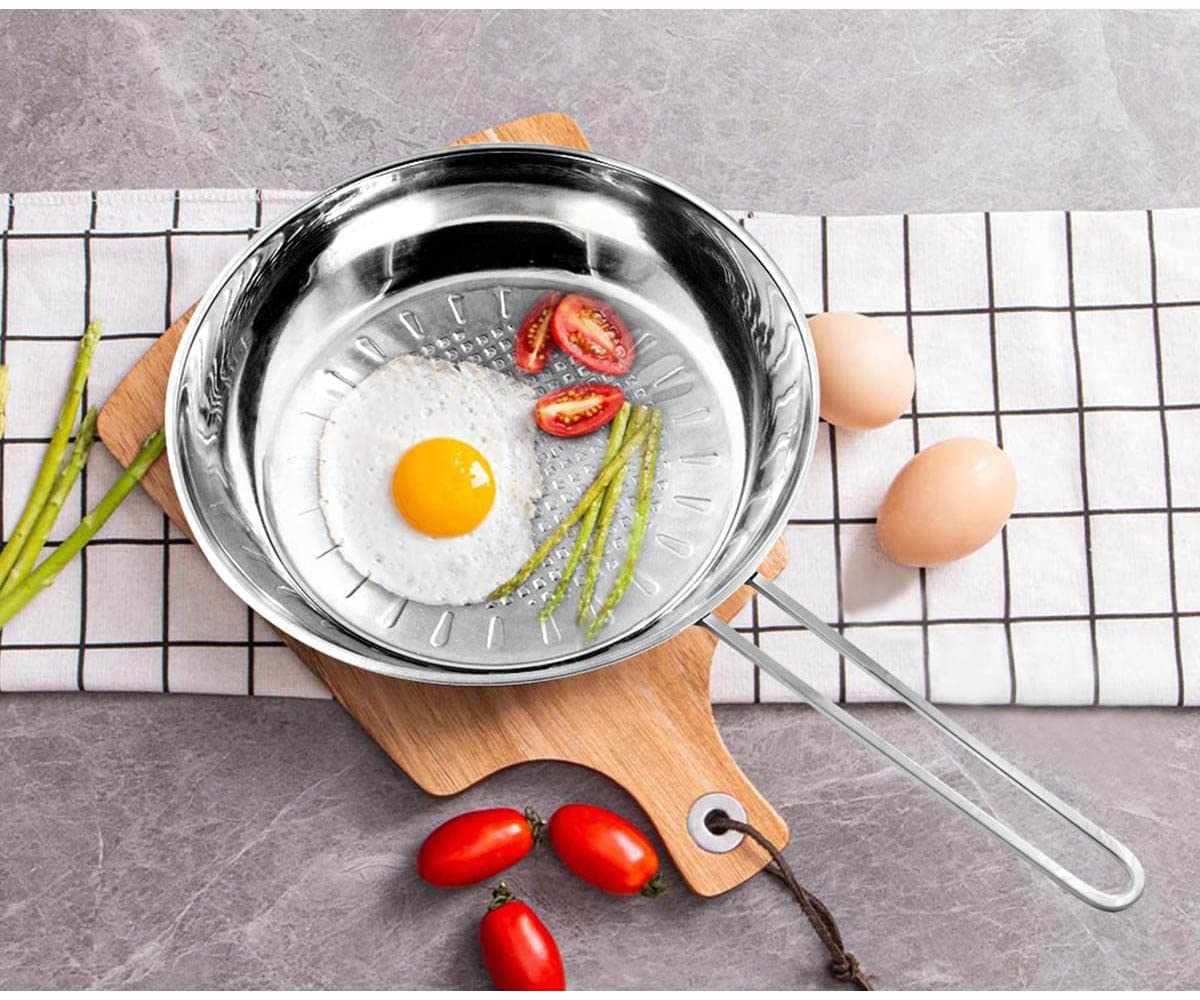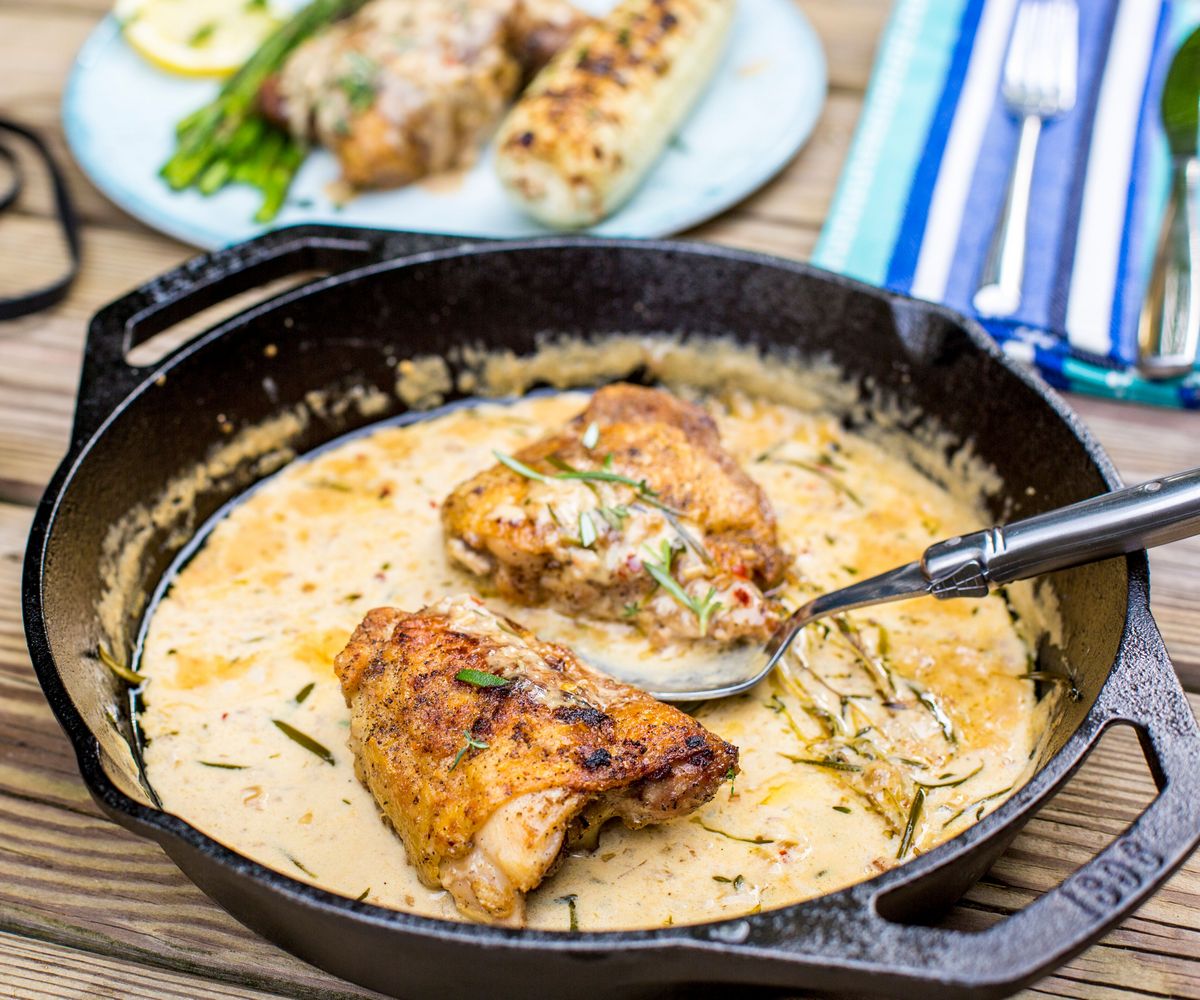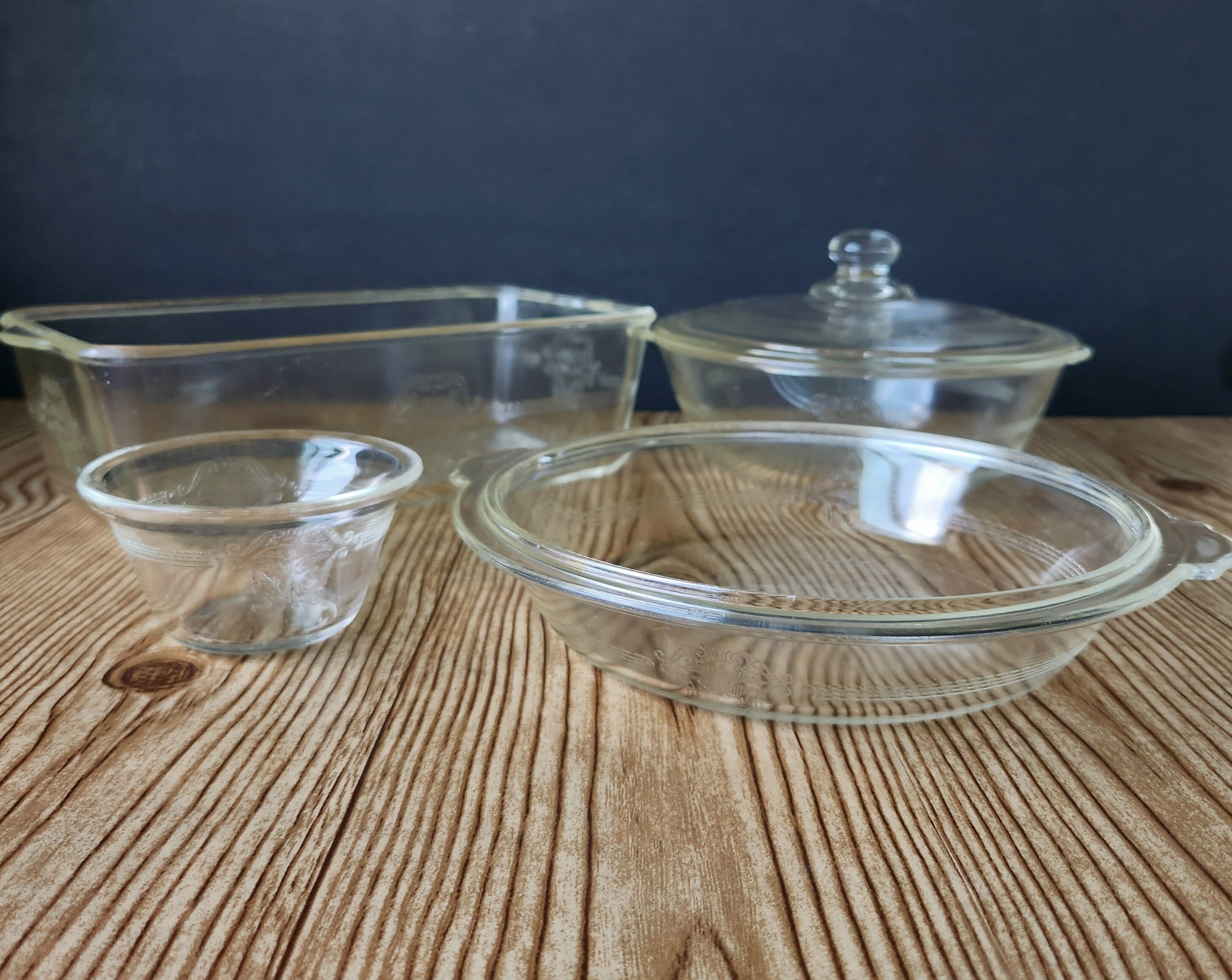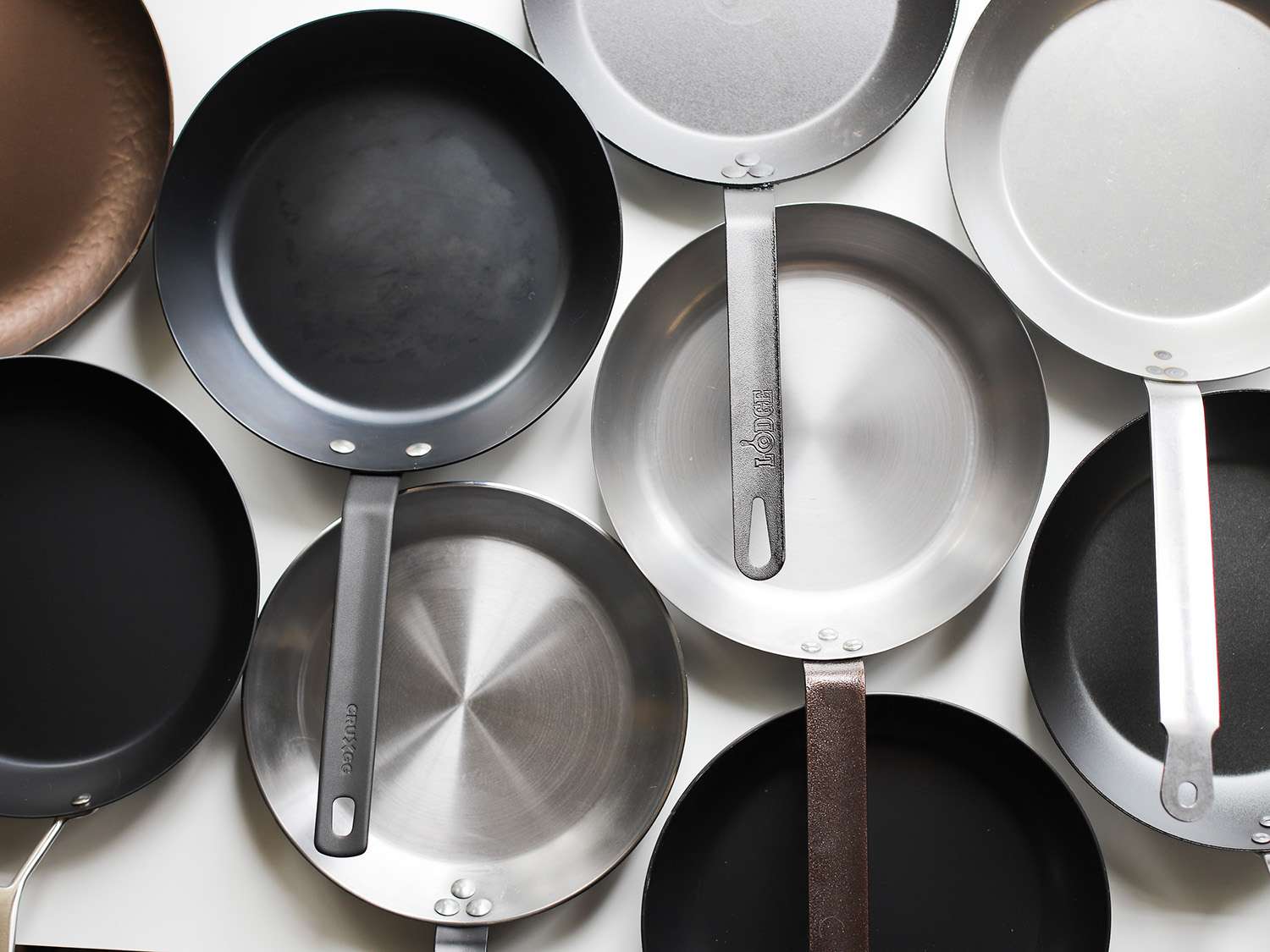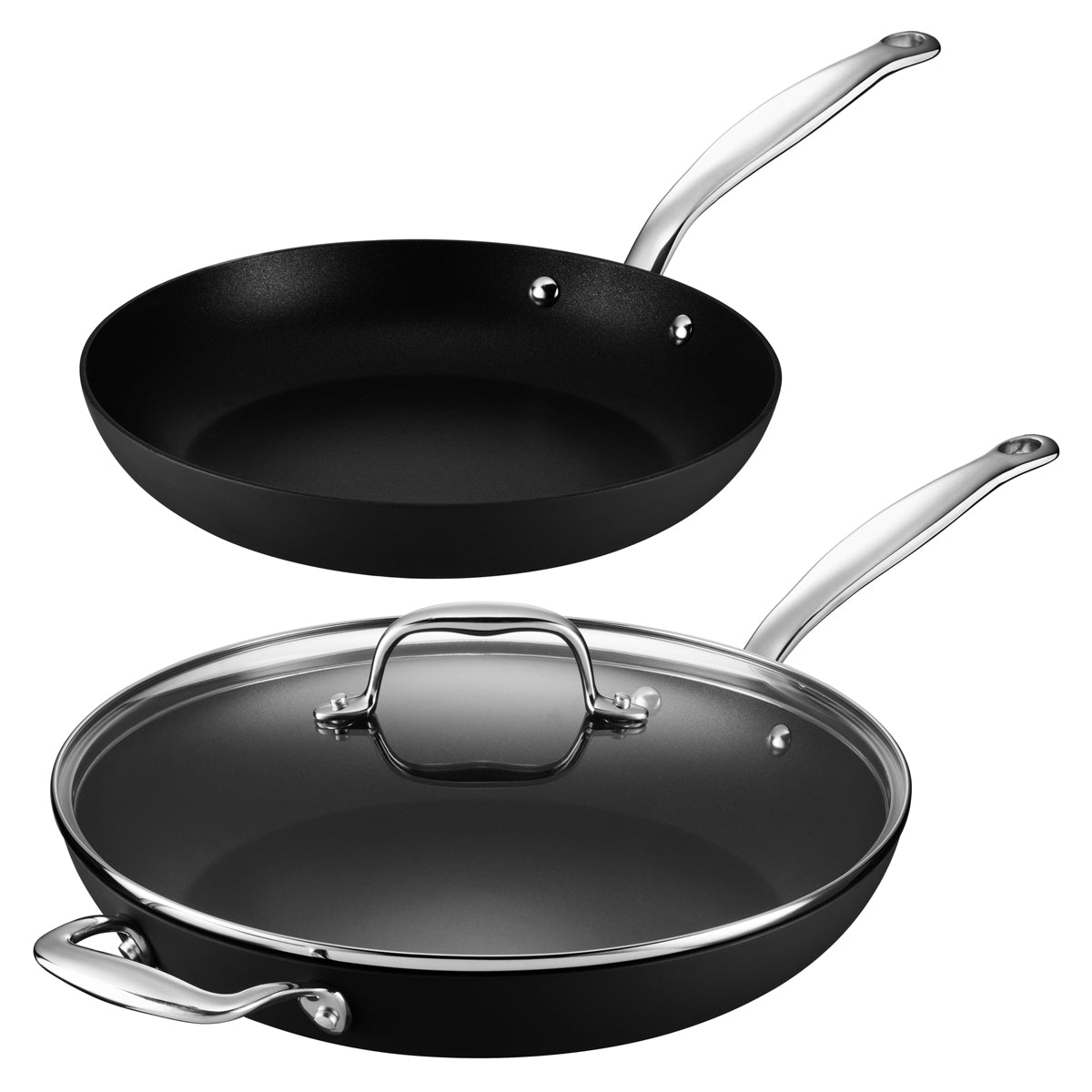10 Safest Pots And Pans & Materials For 2024
Safest pots and pans not only ensure the health and well-being of your family but also contribute to the overall quality of your meals. The market offers a wide range of options, but finding the safest pots and pans can be a daunting task.
Author:Suleman ShahReviewer:Han JuJan 19, 202490 Shares11.2K Views
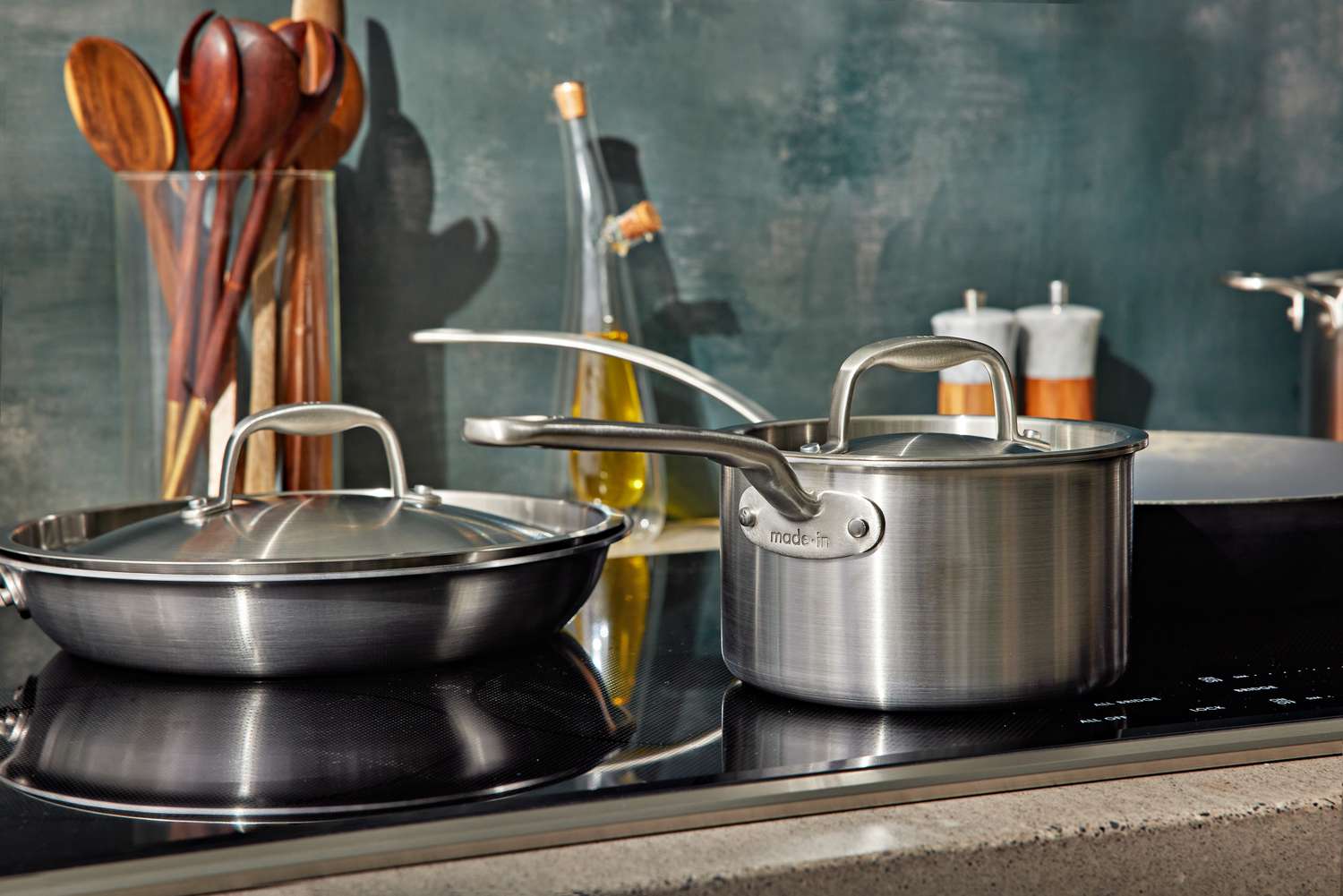
In the quest for a healthier lifestyle, the choice of cookware plays a pivotal role in ensuring that the food we prepare retains its nutritional value while minimizing potential risks. The market is flooded with various types of pots and pans, each claiming to be the safest.
However, understanding the materials, coatings, and their impact on our healthis essential. In this comprehensive guide, we delve into the world of cookware, exploring the safest pots and pansoptions available and providing valuable insights to help you make informed choices for a safer and healthier kitchen.
The Importance Of Choosing The Safest Pots And Pans For Your Kitchen
In the hustle and bustle of modern life, the choices we make in our kitchens can have a profound impact on our overall well-being. One often overlooked yet crucial decision is the selection of pots and pans.
The importance of opting for the safest cookware goes beyond mere convenience; it is a cornerstone of promoting a healthier lifestyle. Here are several vital reasons highlighting the significance of choosing the safest pots and pans for your culinary endeavors.
Preserving Nutritional Value
The quality of the ingredients does not solely determine the nutritional content of our meals; it also hinges on how those ingredients are cooked. Sure, pots and pans, particularly those with non-stick coatings, can release harmful fumes and chemicals when exposed to high temperatures.
It can lead to the degradation of the nutritional value of the food, defeating the purpose of using fresh and wholesome ingredients.
Avoiding Toxic Contaminants
Conventional cookware materials, such as Teflon in non-stick pans or certain metals, have been associated with the leaching of toxic substances into food. Over time, repeated use of such cookware can introduce harmful elements into your meals, posing potential health risks.
Opting for safer materials helps mitigate the risk of ingesting these contaminants, safeguarding your health in the long run.
Minimizing Health Risks
Cooking at high temperatures with the wrong type of cookware can lead to the release of harmful fumes, such as perfluorooctanoic acid (PFOA), a byproduct of Teflon. Prolonged exposure to these fumes has been linked to respiratory issues and other health concerns.
By choosing pots and pans designed with safety in mind, you can minimize the risk of exposing yourself and your family to these potentially hazardous substances.
Enhancing Cooking Efficiency
The safest pots and pans are not only about health but also about practicality. Cookware made from materials like stainless steel and cast iron often distributes heat more evenly, allowing for more efficient cooking.
It ensures that your food cooks uniformly, reducing the likelihood of undercooked or overcooked portions and enhancing the overall quality of your culinary creations.
Long-Term Economic Benefits
Investing in high-quality, safe cookware may seem like a financial commitment initially, but it pays off in the long run. Durable materials like stainless steel and cast iron withstand the test of time, reducing the need for frequent replacements.
By choosing cookware that lasts, you not only save money in the long term but also contribute to sustainable consumption practices.
Environmental Considerations
Some conventional cookware materials, particularly non-stick coatings, can have negative environmental impacts during production and disposal. Opting for eco-friendly and safe alternatives, such as stainless steel or cast iron, aligns with a more sustainable approach to cooking.
These materials are often recyclable and contribute to reducing the environmental footprint associated with cookware manufacturing.
Culinary Versatility
The choice of pots and pans influences the range of recipes you can confidently tackle in your kitchen. Safe cookware materials, like stainless steel and cast iron, can handle a variety of cooking methods, from stovetop searing to oven roasting.
This versatility opens up a world of culinary possibilities, allowing you to explore different cooking techniques without compromising safety.
10 Best Types Of Safest Pots And Pans
Stainless Steel Pots And Pans
Durable and resistant to rust, stainless steel cookware is a top choice for safety, ensuring minimal leaching of harmful substances into your food.
Cast Iron Cookware
Known for its time-tested safety and versatility, cast iron provides excellent heat retention and even distribution, enhancing the nutritional value of your meals.
Ceramic-Coated Pans
Ceramic cookware, with its non-reactive surface, offers a colorful and safe alternative, free from potentially harmful chemicals found in traditional non-stick coatings.
Glass Cookware
Inert and non-reactive glass pots and pans are an excellent choice for those seeking a safe and transparent cooking experience, free from concerns about leaching or chemical exposure.
Titanium Cookware
Lightweight and durable, titanium cookware is celebrated for its resistance to scratches and corrosion, ensuring both safety and long-lasting performance in the kitchen.
Enamel-Coated Cast Iron
Blending the benefits of cast iron with an enamel coating, this cookware not only offers exceptional safety but also comes in a variety of vibrant colors, adding a touch of style to your kitchen.
Carbon Steel Pans
Similar to cast iron, carbon steel cookware is praised for its durability and versatility. It heats up quickly and evenly, providing a safe option for various cooking techniques.
Clay Pots
Derived from natural clay, these pots offer a safe and traditional method of cooking. They are known for imparting a unique flavor to dishes while preserving their nutritional integrity.
Anodized Aluminum Cookware
It balances safety and performance; anodized aluminum cookware creates a protective layer, preventing the potential leaching of aluminum into your food.
Silicone Bakeware
Ideal for baking, silicone pans are safe and flexible, allowing for easy removal of baked goods without the need for excessive oil or butter, promoting healthier cooking.
Choosing from these safest pots and pans ensures not only the longevity of your cookware but also a commitment to healthy and worry-free culinary experiences.
Safest Pots And Pans Material
When it comes to choosing the safest material for pots and pans, several options prioritize both health and cooking performance. Here are some of the safest materials to consider -
Stainless Steel
- Advantages - Durable, resistant to rust and corrosion, non-reactive (does not leach into food).
- Considerations- This may not have non-stick properties without additional coatings.
Ceramic
- Advantages - Non-reactive, free from toxic coatings, easy to clean, and available in vibrant colors.
- Considerations- It can chip or crack if not handled carefully.
Cast Iron
- Advantages - Excellent heat retention, imparts iron to food, is durable, and becomes more non-stick with seasoning.
- Considerations - Requires seasoning and proper maintenance to prevent rust.
Glass
- Advantages- Non-reactive, transparent for easy monitoring, and does not leach harmful substances.
- Considerations - It may only be suitable for some cooking methods and can break if dropped.
Titanium
- Advantages- It is lightweight, durable, resistant to scratches, and has excellent heat conductivity.
- Considerations - This may be more expensive than other materials.
Enamel Coated Cast Iron
- Advantages - Combines the benefits of cast iron with a protective enamel coating, resistant to acidic foods.
- Considerations - Enamel may chip over time.
Anodized Aluminum
- Advantages- Treated to prevent aluminum leaching, durable, and heats up quickly.
- Considerations - This may require careful maintenance to preserve the anodized coating.
Copper (with Proper Coating)
- Advantages- Excellent heat conductivity, aesthetically pleasing, and, when coated, minimizes the risk of copper leaching.
- Considerations- Uncoated copper can leach into food and may require regular polishing.
Silicone
- Advantages- Flexible, non-stick, resistant to stains and odors, ideal for bakeware.
- Considerations- It is typically used for bakeware and utensils rather than stovetop cooking.
Carbon Steel
- Advantages- Lightweight, durable, quick to heat up and cool down.
- Considerations- Requires seasoning similar to cast iron.
Safest Cookware Brands & Materials For 2024
In the ever-evolving landscape of kitchen essentials, safety takes center stage. As we step into 2024, let's explore the safest cookware brands and materials that prioritize health without compromising on culinary excellence.
Ceramic Cookware - A Healthy Touch Of Elegance
Ceramic cookware has emerged as a front-runner in the quest for safe and stylish kitchen tools. Its non-reactive nature and absence of toxic coatings make it a preferred choice for health-conscious individuals.
Discover the top ceramic cookware brands that marry elegance with safety, elevating your cooking experience.
Aluminum Cookware - Navigating The Anodized Advantage
Aluminum cookware, when treated right, can be a safe and efficient choice. Anodized aluminum, in particular, adds a layer of protection against leaching, ensuring your meals stay uncontaminated.
Uncover the leading brands harnessing the benefits of anodized aluminum for a safer and more enjoyable cooking journey.
Stainless Steel Cookware - Durability Meets Safety
Renowned for its durability and resistance to corrosion, stainless steel cookware is a staple in kitchens worldwide.
Explore the top-notch stainless steel cookware brands that prioritize safety, offering a reliable and enduring companion for your culinary adventures.
Non-stick Cookware - Striking The Right Balance
Non-stick cookware, while convenient, has raised concerns over potential health risks. However, advancements in technologyhave given rise to safer, non-stick options.
Dive into the world of non-stick cookware that prioritizes safety without compromising on the ease of use, making your cooking experiences healthier and more enjoyable.
Cast Iron Cookware - Time-Tested And Trusted
With a historydating back centuries, cast iron cookware remains a symbol of reliability and versatility. Its seasoned surface not only provides excellent non-stick properties but also imparts iron to your food.
Unearth the safest cast iron cookware brands that uphold tradition while embracing modern safety standards.
Copper Cookware - A Gleaming Choice For Safety
Copper cookware, known for its excellent heat conductivity, has gained popularity in modern kitchens. However, concerns about copper leaching into food have led to innovations in safe copper cookware.
Discover the top brands that harness the benefits of copper without compromising your health.
GreenPan - Pioneering Ceramic Non-stick Innovation
As a brand dedicated to the fusion of health and convenience, GreenPan has become synonymous with ceramic non-stick cookware.
Explore how GreenPan leads the way in providing a safe and sustainable cooking experience, making it a must-have in kitchens prioritizing health and environmental consciousness.
All-Clad - Elevating Stainless Steel Safety Standards
All-Clad, a stalwart in the cookware industry, continues to set benchmarks for quality and safety.
Dive into the realm of All-Clad stainless steel cookware, exploring how this brand combines innovation with tradition to offer cookware that stands the test of time while prioritizing your health.
Lodge - Cast Iron Excellence For The Modern Kitchen
Lodge has been a household name in cast iron cookware for generations. Discover how this brand blends tradition with modern safety standards, providing cast iron cookware that not only lasts a lifetime but ensures a healthier cooking experience.
How Safe Coatings Ensure A Healthy Kitchen
In the heart of every kitchen, the choice of cookware is a pivotal decision that directly impacts the health and well-being of those we cook for.
The journey to the safest pots and pans involves navigating through various materials, each vying for attention with promises of safety and performance.
One aspect that stands out in this culinary exploration is the role of safe coatings, a critical factor in ensuring a healthy kitchen environment.
The Foundation Of Safety - Understanding Safe Coatings
Before delving into the specifics of how safe coatings contribute to a healthy kitchen, it's essential to understand their significance.
Safe coatings act as a protective barrier between the cookware material and the food, preventing the leaching of harmful substances into our meals.
This protective layer becomes the cornerstone of cooking with confidence, assuring us that our pots and pans prioritize safety without compromising on functionality.
Navigating The Market - The Quest For The Safest Pots And Pans
As we embark on the journey to find the safest pots and pans, the market presents a myriad of options, each boasting different types of coatings.
From ceramic to enamel and non-stick variants, the key is to decipher which coatings align with our vision of a healthy kitchen.
It's not just about convenience; it's about cooking with confidence, knowing that every meal prepared in these pots and pans contributes to the well-being of our loved ones.
Safest Pots And Pans - Unveiling The Role Of Ceramic Coatings
One of the standout contenders in the realm of safe coatings is ceramic. Ceramic coatings offer a non-reactive surface that does not leach harmful chemicals into food.
This quality makes ceramic one of the safest options for pots and pans. Whether you're sautéing, simmering, or searing, the confidence that comes with using ceramic-coated cookware is unparalleled. With every stir of the spatula, you're not just cooking; you're crafting a healthy masterpiece in the safest pots and pans available.
Ensuring Health In Every Layer - The Non-Stick Revolution
Non-stick coatings have revolutionized the way we cook, providing a convenient and efficient experience. However, concerns about the safety of traditional non-stick coatings have led to innovations in the industry.
The newest generation of non-stick coatings is designed to be PFOA-free, ensuring that the safest pots and pans not only offer easy release but also prioritize your health. It's a paradigm shift in cooking confidence, where non-stick becomes synonymous with both convenience and safety.
The Harmony Of Functionality And Safety - Enamel-Coated Cookware
Enamel-coated cookware marries functionality with safety in an aesthetically pleasing package. The enamel layer acts as a shield, preventing the leaching of metals from the base material.
Cooking with confidence in enamel-coated pots and pans means savoring the flavors of your favorite dishes without the worry of unwanted substances finding their way into your culinary creations.
How To Choose The Safest Pots And Pans
Choosing the safest pots and pans involves considering various factors, from the materials used to the coatings applied. Here's a guide to help you make informed decisions and prioritize safety in your cookware choices.
Material Matters
- Stainless Steel - Opt for cookware made of high-quality stainless steel. It's durable, non-reactive, and doesn't leach harmful substances into food.
- Ceramic -Look for pots and pans with a ceramic coating. Ceramic is non-reactive, doesn't contain toxic materials, and provides a smooth cooking surface.
- Cast Iron- Choose seasoned cast iron cookware. The seasoning creates a natural, non-stick surface, and it adds a small amount of iron to your food.
- Glass -Glass cookware is inert and won't leach any harmful chemicals. It's an excellent choice for baking and oven use.
- Anodized Aluminum - If opting for aluminum, choose anodized aluminum cookware. The anodization process creates a protective layer that prevents aluminum from leaching into your food.
Non-Stick Considerations
- Safe Non-Stick Coatings- If you prefer non-stick cookware, choose options with PFOA-free coatings. Manufacturers have developed safer alternatives to traditional non-stick coatings.
- Ceramic Non-Stick- Consider pots and pans with ceramic non-stick coatings. They are free from PFOA and provide a non-reactive surface.
Coating Durability
- Enamel-Coated Cookware- Enamel coatings, when properly cared for, can provide a durable and non-reactive surface. Be mindful of potential chipping.
- Seasoned Cast Iron- Regular maintenance, including seasoning, is crucial for cast iron cookware to maintain its non-stick properties and prevent rusting.
Environmental Impact
- Recyclable Materials- Choose cookware made from recyclable materials to reduce the environmental impact. Stainless steel, cast iron, and glass are good options.
Cooking Habits
- Versatility - Consider your cooking habits and choose versatile cookware that suits a variety of cooking methods, from stovetop to oven.
Quality Brands
- Reputable Brands- Stick to well-known and reputable cookware brands. They often invest in research and development to ensure the safety and quality of their products.
Budget Considerations
- Invest Wisely- While it's tempting to opt for budget-friendly options, consider cookware as an investment. High-quality, safer materials may cost more initially but can offer long-term durability.
Customer Reviews
- Research Reviews- Read customer reviews to gain insights into the experiences of other users. Look for feedback on safety, durability, and overall satisfaction.
Maintenance Requirements
- Follow Care Instructions- Different materials and coatings have specific care instructions. Follow them diligently to ensure the longevity and safety of your cookware.
Check For Certifications
- Look for Safety Certifications - Some cookware may carry certifications indicating that it meets specific safety standards. Check for labels from relevant authorities.
Safest Pots And Pans - FAQs
What To Look For When Buying Safe Pots And Pans?
CR advises ceramic-coated pans with "PTFE-free claims" to avoid PFAS in cookware. Uncoated carbon steel and cast iron pans are also good. Drinking water tested for PFAS and using a certified filter are other ways to avoid it.
How Do I Know If My Pans Are Safe?
Before cooking, check the pan's base material—aluminum, steel, or another metal—for oven safety. You should also check the pan for rubber or plastic handles or lids, which might warp.
What Type Of Pan Is Best?
Overall, stainless steel pans are more adaptable. They can withstand high heat, be used in the oven, and conduct heat evenly, so there are no cold or hot places after heavy usage.
Are Aluminium Pans Safe?
Low-level exposure from aluminum cans, cookware, cutlery, and food wrappings should not harm health. More significant amounts may cause stomach disturbances, nausea, and diarrhea.
How Does Cast Iron Contribute To The Category Of The Safest Pots And Pans?
Cast iron is deemed one of the safest pots and pans due to its durability, ability to impart iron to food, and the creation of a seasoned, non-stick surface through proper maintenance.
Conclusion
In the pursuit of a healthier lifestyle, the pots and pans we choose to cook with are paramount. From the potential dangers of non-stick coatings to the time-tested safety of cast iron, understanding the nuances of cookware materials empowers us to make informed decisions.
As we bid farewell to harmful fumes and toxic substances, embracing the safety and versatility of stainless steel, cast iron, ceramic, and enamel-coated cookware becomes a crucial step.
The journey to a safer kitchen is not just about cooking—it's about nourishing our bodies with the confidence that comes from choosing the safest pots and pans for our culinary adventures.
Jump to

Suleman Shah
Author
Suleman Shah is a researcher and freelance writer. As a researcher, he has worked with MNS University of Agriculture, Multan (Pakistan) and Texas A & M University (USA). He regularly writes science articles and blogs for science news website immersse.com and open access publishers OA Publishing London and Scientific Times. He loves to keep himself updated on scientific developments and convert these developments into everyday language to update the readers about the developments in the scientific era. His primary research focus is Plant sciences, and he contributed to this field by publishing his research in scientific journals and presenting his work at many Conferences.
Shah graduated from the University of Agriculture Faisalabad (Pakistan) and started his professional carrier with Jaffer Agro Services and later with the Agriculture Department of the Government of Pakistan. His research interest compelled and attracted him to proceed with his carrier in Plant sciences research. So, he started his Ph.D. in Soil Science at MNS University of Agriculture Multan (Pakistan). Later, he started working as a visiting scholar with Texas A&M University (USA).
Shah’s experience with big Open Excess publishers like Springers, Frontiers, MDPI, etc., testified to his belief in Open Access as a barrier-removing mechanism between researchers and the readers of their research. Shah believes that Open Access is revolutionizing the publication process and benefitting research in all fields.

Han Ju
Reviewer
Hello! I'm Han Ju, the heart behind World Wide Journals. My life is a unique tapestry woven from the threads of news, spirituality, and science, enriched by melodies from my guitar. Raised amidst tales of the ancient and the arcane, I developed a keen eye for the stories that truly matter. Through my work, I seek to bridge the seen with the unseen, marrying the rigor of science with the depth of spirituality.
Each article at World Wide Journals is a piece of this ongoing quest, blending analysis with personal reflection. Whether exploring quantum frontiers or strumming chords under the stars, my aim is to inspire and provoke thought, inviting you into a world where every discovery is a note in the grand symphony of existence.
Welcome aboard this journey of insight and exploration, where curiosity leads and music guides.
Latest Articles
Popular Articles

